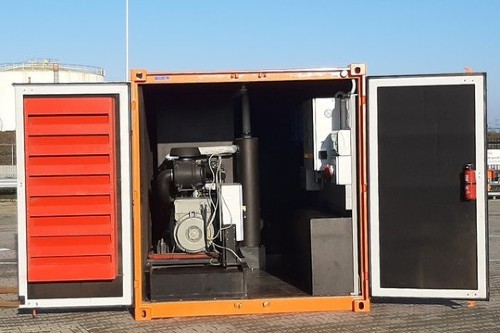Reading time: 3 minutes
Building more sustainably and working with lower emissions has become a universal goal. This includes not only reducing direct emissions from construction equipment but also indirect emissions from building materials. Developments in the field of construction equipment have rapidly accelerated in recent years. Machine manufacturers are all exploring a range of solutions, from low to zero emission. In this series of articles, Boels compares the solutions that are currently available for building more sustainably, from stage V diesel to hybrid and battery drive systems. Our focus in this article will be on hybrid technology. What does hybrid mean and when is it a viable solution for building more sustainably?
What does hybrid mean exactly?
Harm Munsters, Manager of Fleet & Maintenance (Netherlands) at Boels Rental, explains what this term means for construction equipment: “Hybrid refers to vehicles that have an internal combustion engine in addition to an electric or battery drive system. In principle, the machines are able to run on zero-emission electric or battery power. Depending on the machine, the fuel engine acts as a kind of backup, allowing you to move the machine or to continue working when the battery is empty.”
When is a hybrid used?
Hybrid systems are mainly used in ‘larger’ construction equipment, where a full battery drive is not yet possible due to the power or capacity requirements. The limitation of a hybrid system is that two motors are required to drive the machine. That requires space. And that is why hybrid systems are used less frequently with ‘smaller’ or compact construction equipment. By using electric or battery power, it is still possible for ‘larger’ construction equipment to achieve lower or zero emissions. An additional advantage is the possibility of low-noise operation, which is ideal when working indoors or in the city. This allows hybrid machines to be compliant with legislation and regulations for a number of activities and projects. Depending on the construction equipment that is required and its application, hybrid can offer an accessible solution to working with low, and in some cases even zero, emissions.
Renting hybrid construction equipment?
Generally speaking, hybrid construction equipment requires a higher investment than conventional machines. Renting is a better option than buying, in both economical and ecological terms. After all, renting machines makes a positive contribution to the circular economy: sharing rather than owning.
At Boels, you have access to the largest and newest fleet of hybrid equipment with nearly 500 machines. Munsters: “We believe in this technology and that it is a step towards working with zero emissions. That’s why we will be investing heavily in hybrid and zero emission equipment in the years to come and why we are working closely with machine manufacturers.”
Top 5 hybrid construction machines from Boels
Rough terrain articulated telescopic boom lifts (12073, 12070, 18037, 12071)
Boels offers four different hybrid articulated telescopic boom lifts, with working heights ranging from 12 to 21 metres. They are economical and produce very few emissions. When operating on batteries, they are also remarkably quiet. This makes these boom lifts extremely suitable for use indoors or in locations where low noise and/or low emission levels are requested. Most models are also equipped with four-wheel drive for achieving good grip on rough terrain.
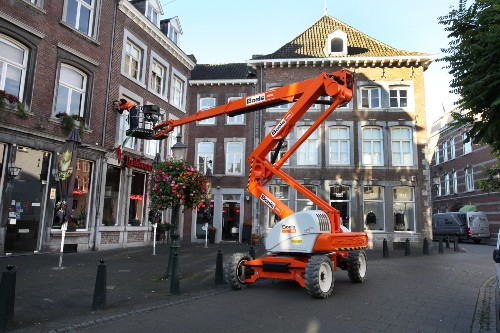
Scissor lift (18072)
In electric mode, this hybrid scissor lift can be readily used in confined spaces such as industrial halls. The four-wheel drive allows the lift to operate even over difficult terrain, e.g. when the floor has been opened up or has not yet been poured. Thanks to the 5kW generator, it can be easily recharged between jobs to extend the operating time.
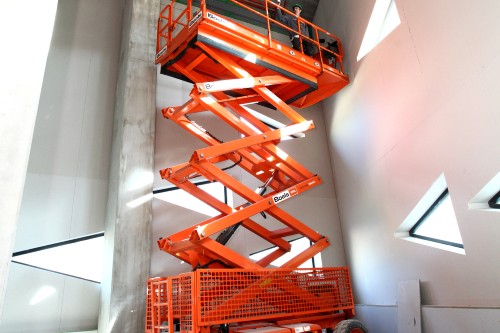
Trailer-mounted DIS/roadside VMS (12154, 12158)
The trailer-mounted DIS and the roadside VMS are both self-running and equipped with a 230V battery generator. This allows them to operate independently for up to one week. They are easy to move and can therefore be quickly deployed in case of (road)works or emergencies.
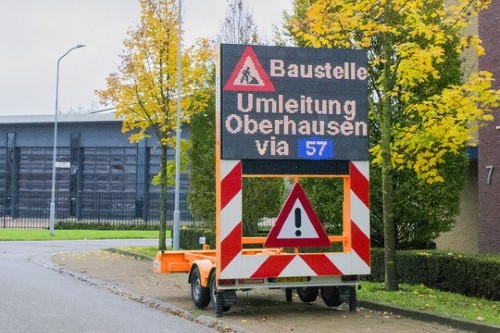
Mobile lighting tower (12535)
This hybrid lighting tower with LED is the most environmentally-friendly of its kind. The tower runs fully automatically using 90% battery power and only 10% diesel. This results in savings of up to 86% on fuel and CO2 emissions. The lighting tower can run for roughly 3 weeks on one tank (160 litres).
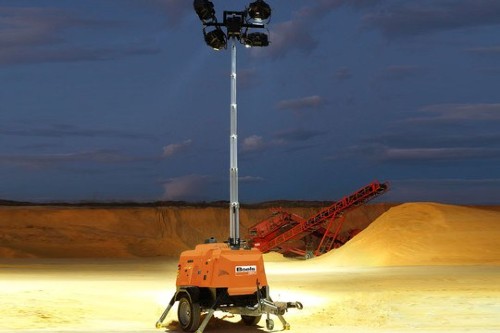
Hybrid generator (84199)
This hybrid generator is equipped with a built-in battery pack. As compared to conventional generators, this hybrid alternative saves about 60% on fuel. The energy is stored in the battery pack. The built-in generator only switches on at times of peak demand.
